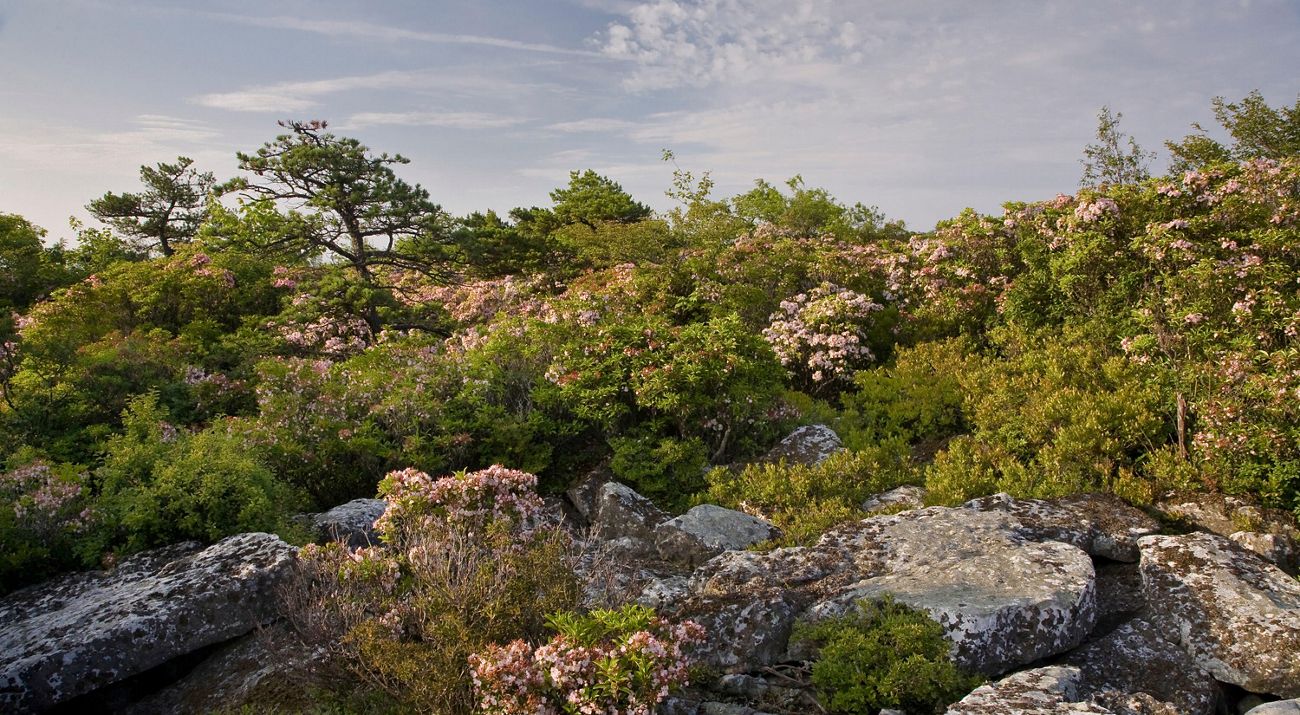Description
This large tract of preserved land (53,000-acre core area; 50,000-acre Compatible Growth Area) is a diverse mosaic of pitch pine woodlands, pitch pine-oak forests, coastal plain ponds, swamps, marshes, grasslands and streams. The Pine Barrens overlies Long Island’s freshwater aquifer and helps to purify Long Island's treasured drinking water.
Ecological Importance
The Pine Barrens is a large, contiguous, ecologically functional landscape in the midst of a heavily urbanized area. It is The Nature Conservancy's challenge to protect the hydrological and ecological integrity of the Long Island Pine Barrens while recognizing human needs and accommodating development in the adjacent compatible growth area (Long Island Pine Barrens Protection Area).
Animals: A variety of animals, birds, reptiles, and amphibians use the diverse and varied habitats of the Pine Barrens—ranging from water-dependent tiger salamanders to fire-adapted Coastal Barrens Buckmoth. A long list of rare damselflies, moths and butterflies, as well as a variety of migratory and breeding bird species, make the Pine Barrens a hotspot for naturalists of all interests.
Plants: Globally rare Dwarf Pine Plains with stunted pygmy pitch pines, Coastal Plain Pond shores host more than 50 species of state rare plants including numerous species of bladderworts the shrubby scrub oak, and smaller heath species such as huckleberry, blueberry, sheep laurel, wintergreen are also characteristic Pine Barrens plants.
Conservation Concerns
About 52,000 acres of relatively intact Pine Barrens still remain in what is called the "core area." Much of this core is contiguous, expansive Pine Barren forest, although various roads cross the core area, which contains some houses, agricultural fields, golf courses, and limited commercial development.
The surrounding area has a greater density of residential, commercial, and agricultural development. Wildland fires play a very prominent role in the Pine Barrens, considered by Conservancy scientists and others as "fire dependent" natural communities. Many rare or unique species have adapted to and actually depend on periodic fires for long-term survival. With the ever-increasing effectiveness of fire control efforts, fires have become less frequent, leading to declining forest health and greater risk of uncontrollable wildfires like the Sunrise fires of 1995.
Conservation Strategies
The Pine Barrens is a dynamic landscape, where natural ecological processes like fire, hydrology (water flow), and animal migration thrive in diverse natural communities.
Conservation strategies in this landscape include maintaining and/or restoring natural processes to the Pine Barrens ecosystem (especially fire and hydrological cycles); ensuring no net loss in acreage of natural communities in the ecosystem; and keeping all existing coastal plain pond and pond shore communities at high-quality levels.
